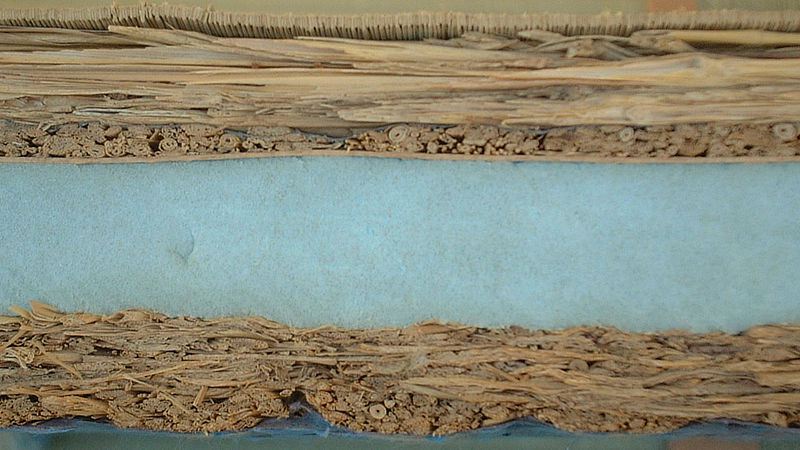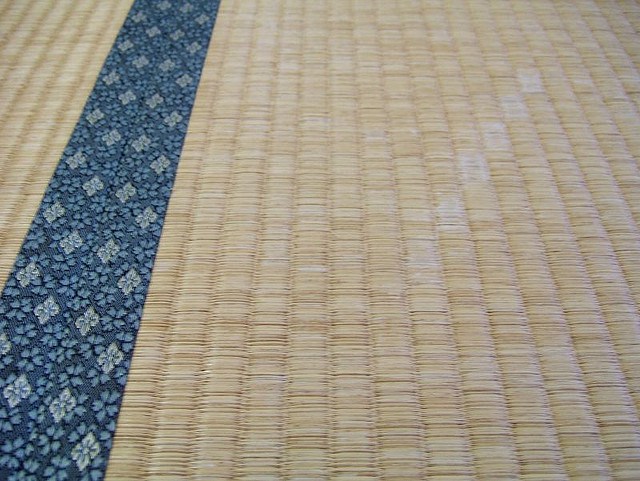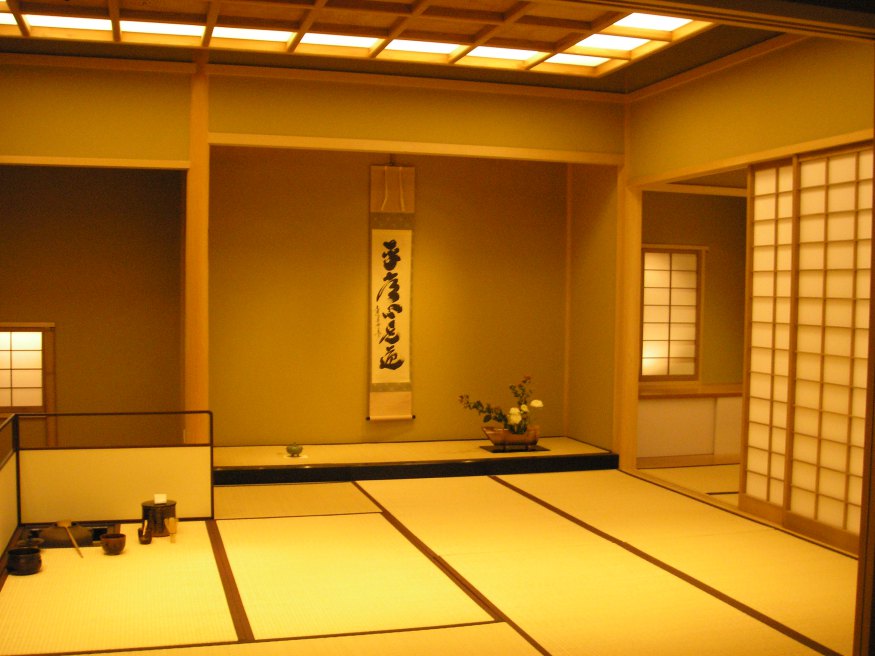【RocketNews24】The demise of traditional Japanese tatami flooring?
Posted by Michelle Lynn Dinh (Shimane-ken, Chibu-mura, 2010–13), editor and writer for RocketNews24. The following article was written by Angelina Lucienne, a writer and translator for RocketNews24, a Japan-based site dedicated to bringing fun and quirky news from Asia to English speaking audiences.
If you imagine a Japanese room, chances are you think of something like the picture above: a simply furnished room with sliding shōji doors, a tokonoma with a hanging scroll, and a tatami mat floor. These are examples of the virtues of traditional Japan that many foreigners often hear extolled (along with futon, sushi and judo). When they occupy such an important part of Japanese identity, you wouldn’t think they would be in danger of disappearing anytime soon.
However, the demand for tatami mats has gone down by one third in the last 20 years and many artisans are worried the trade will soon be lost, as more and more of them find themselves rapidly aging with no successors to continue the business. Why is it that tatami floors are becoming rare now, after enduring for so long?
If you are not familiar with tatami mat floors, they are made of dried, woven rushes which are then wrapped around and sewn to a core. Traditionally the core consisted of rice straw, though now it is often synthetic material. The result is a floor that has a springy but firm texture, making it ideal for sitting and sleeping on.
▼ Futon were made to be used on top of tatami mats, so they don’t need to be very thick to be comfortable.
▼ The rushes are woven tightly, so the surface is pleasantly smooth.
▼ The edges of each mat are finished with a thick brocade-like fabric.
They are easily scratched, gouged or stained, making them more difficult to care for than other types of floor. In addition, they need to be replaced relatively often. They are usually flipped over after a few years of use, but even gently used tatami mats will need replacements in under a decade. As you can see in the video below, producing tatami mats is very labor intensive, so they don’t come cheap.
So is it just a matter of price? Well, not quite. Masao Nakano, a tatami-maker in Kyoto, has been in business for over 20 years and has watched other tatami producers in the area close up shop one after another. One day he was carrying new mats to an apartment when he heard junior high school girls remarking that the mats smelled bad.
Nakano is not the only one who concluded that the culture is just changing. Kazuhiko Tanaka, Head of the Agricultural Production and Distribution Department of Yatsushiro, Kumamoto (one of Japan’s top rush producers) pointed out that the 2020 Tokyo Olympics would provide many opportunities for visitors to experience tatami mat floors as a part of Japanese hospitality. He suggested installing them in the Olympic village so that the athletes would be able to enjoy them.
Whether they can enjoy them or not may be contingent upon whether or not they find them smelly or not. A blogger at Hachima Kikou remarked, “I think rushes smell good. It’s sad that tatami mats are disappearing from Japanese homes.” They posted a poll simply asking whether their readers preferred washitsu (Japanese-style rooms with tatami mats) or yōshitsu (Western-style rooms with any other kind of floor). The results came back overwhelmingly in favor of Japanese-style rooms with 1,84o votes and only 797 for Western-style rooms.
There are undoubtedly inconveniences to having tatami mat floors, but they have an incredible amount of charm, and personally, I’ve always loved them. They have a distinct smell: sweet and strong but without being heavy. The heat and humidity of the summer brings it out a lot more, so the smell always reminds me of the summer I first moved to Japan. If it has that kind of effect on me, if must have an even greater one on people who have memories or summers at grandma’s house or taiko lessons at the community center. While tatami mats may be less common in homes than they used to, they will surely have a place in the hearts of many residents of Japan for a very long time to come.
Source: Hachima Kikou, Yahoo! Japan News
Images: Wikipedia (Gryffindor, ignis, Suguri_F), flickr (1, 2)
More from RocketNews24
- Japanese photographer shrink-wraps strangers to capture love in Tokyo 【Photos】
- The official Street Fighter: Assassin’s Fist trailer just made our day【Video】
- Everyday Japanese names that make English speakers chuckle




Comments are closed.